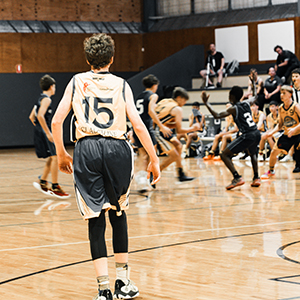- Aircraft collided with rising terrain after conducting a touch and go from a rural property airstrip during a preparation flight for a commercial pilot licence test;
- Preflight planning was likely not performed to identify if the airstrip was suitable for flight training operations;
- Touch-and-go likely used more runway than a standing take-off, leading to the aircraft becoming airborne further along the runway, and closer to the rising terrain.
Rising terrain in the direction of take-off meant an airstrip being used for a touch-and-go was unsuitable as it exceeded the climb performance of the aircraft, an Australian Transport Safety Bureau investigation has found.
Two pilots, an instructor and student, were fatally injured when their single-engine two-seat Aquila aircraft collided with an embankment after a touch-and-go at Coombing Park airstrip in central west New South Wales, on 4 November 2020.
The flight was being conducted to assess the readiness of the student to complete a commercial pilot licence flight test. The flight had proceeded to overhead Coombing Park, where the student demonstrated the conduct of a precautionary search, to assess the suitability of conducting a landing there.
Following the precautionary search, a touch‑and‑go (landing without coming to a stop and accelerating to take-off again) was performed at Coombing Park. As the aircraft climbed through 200 ft above the lift-off point, a climbing left turn was conducted before flying straight again in the direction of a small dam, beyond which was a less wooded area. The aircraft then passed over the small dam and collided with an embankment on the far side of the dam.
“The ATSB found that pre-flight planning was likely not performed to identify if Coombing Park was suitable for flight training operations, which placed more importance on the conduct of the precautionary search to identify the rising terrain hazard in the overshoot area of the runway,” said ATSB Director Transport Safety Stuart Macleod.
“The precautionary search was conducted at a height and position that likely made assessing the hazard less effective.”
Further, the take-off was conducted on an uphill slope with a probable tailwind. A standing take-off in the more favourable reciprocal direction would likely have cleared all obstacles and terrain.
“Particularly at an unfamiliar airstrip, pilots must carefully consider the aerodrome characteristics to confirm if a touch-and-go is feasible, or if a full-stop landing and standing take-off should be completed instead,” Mr Macleod said.
“This accident demonstrates that the lift-off location following a touch-and-go is more variable and complex to predict than a standing take-off.”
The investigation also found that the aircraft operator had based its operations manual on the sample operations manual published by the Civil Aviation Safety Authority (CASA), which allowed for flight training into any aerodrome listed in the En-Route Supplement Australia (ERSA), including ALAs, although ALAs are not assured to any operational standard.
In addition, the investigation found that recommendations contained in the since-replaced CASA guidance CAAP 92-1(1) did not provide assurance that an aircraft would be able to outclimb rising terrain after take-off more than 900 metres from the runway end.
“Operators should also be aware that aerodromes meeting the recommendations in the now-obsolete CASA guidance publication CAAP 92-1(1) are not assured that an aircraft will be able to successfully climb away after take-off more than 900 metres past the runway end,” said Mr Macleod.
“The new performance-based recommendations of AC 91-02 now require operators to consider obstacle clearance beyond 900 metres.”
Flight training operators should also note that there are no standards for ALAs, even those listed in the ERSA as uncertified aerodromes.
“The published data, including obstacle information, for these uncertified aerodromes are potentially incomplete or inaccurate,” said Mr Macleod.
“This means that for take-off from ALAs, the new guidance requires pilots and operators to know the climb gradient needed to clear all obstacles by a safe margin until the aeroplane reaches the minimum height for flight,” Mr Macleod concluded.
You can find here the report: AO-2020-059: Collision with terrain involving Aquila AT01, VH-OIS, Coombing Park Airstrip, 27 km south of Orange, New South Wales on 4 November 2020








